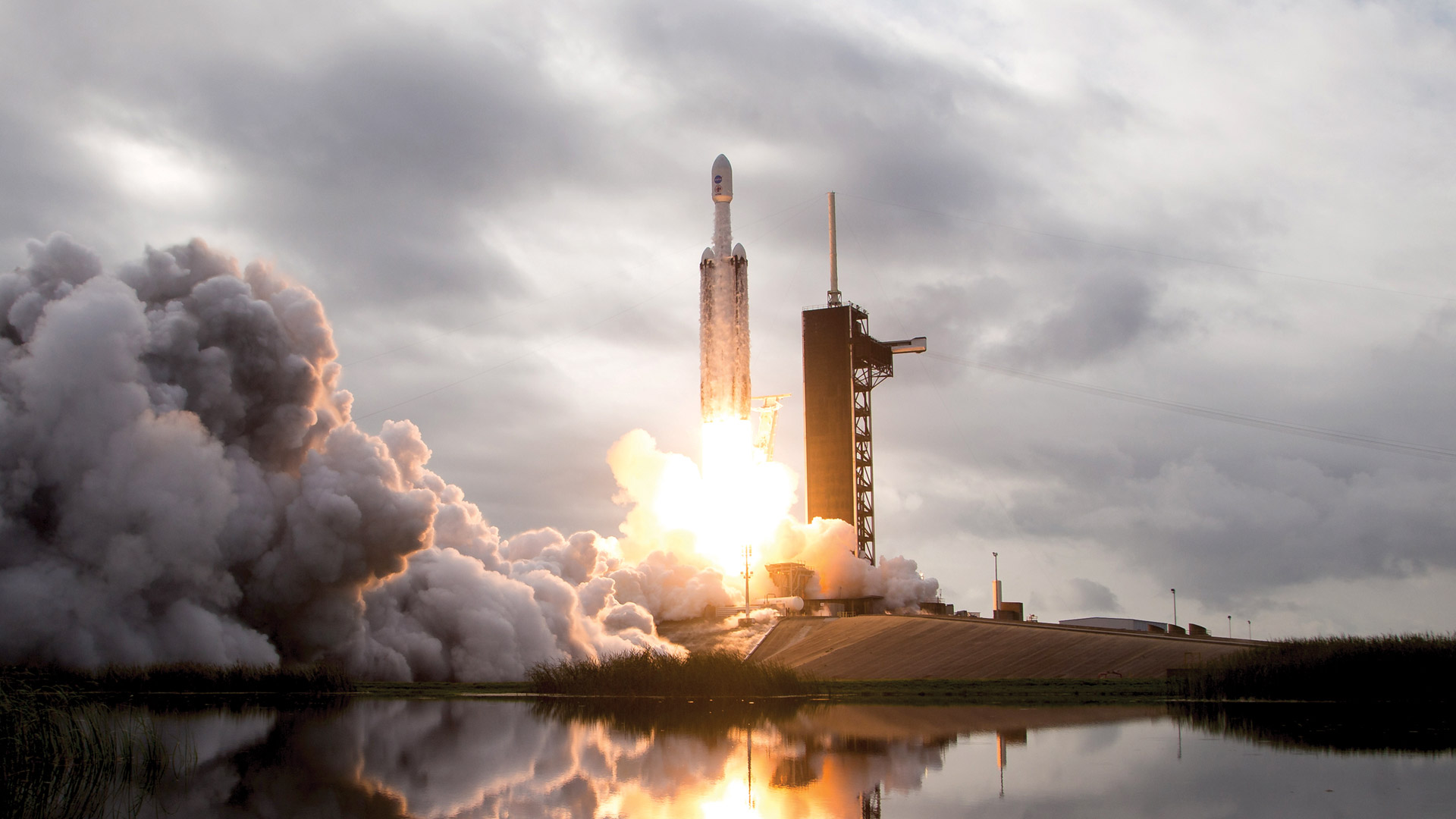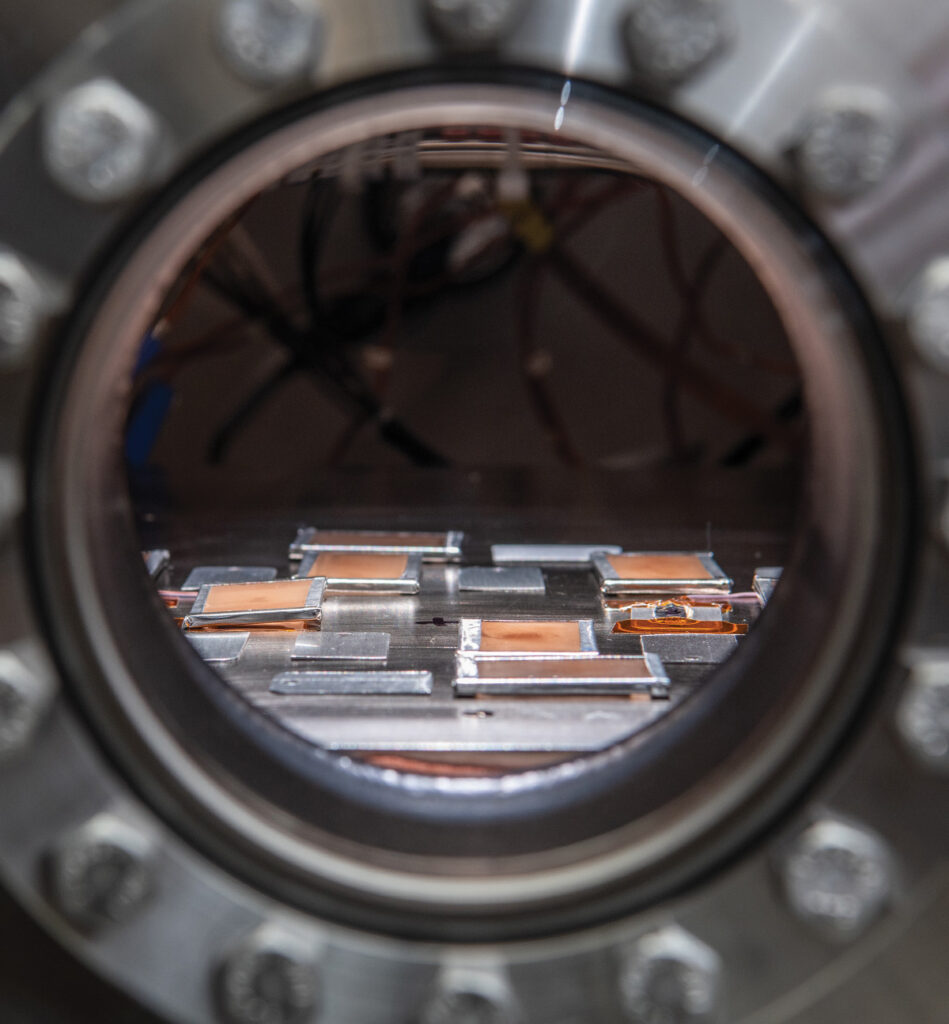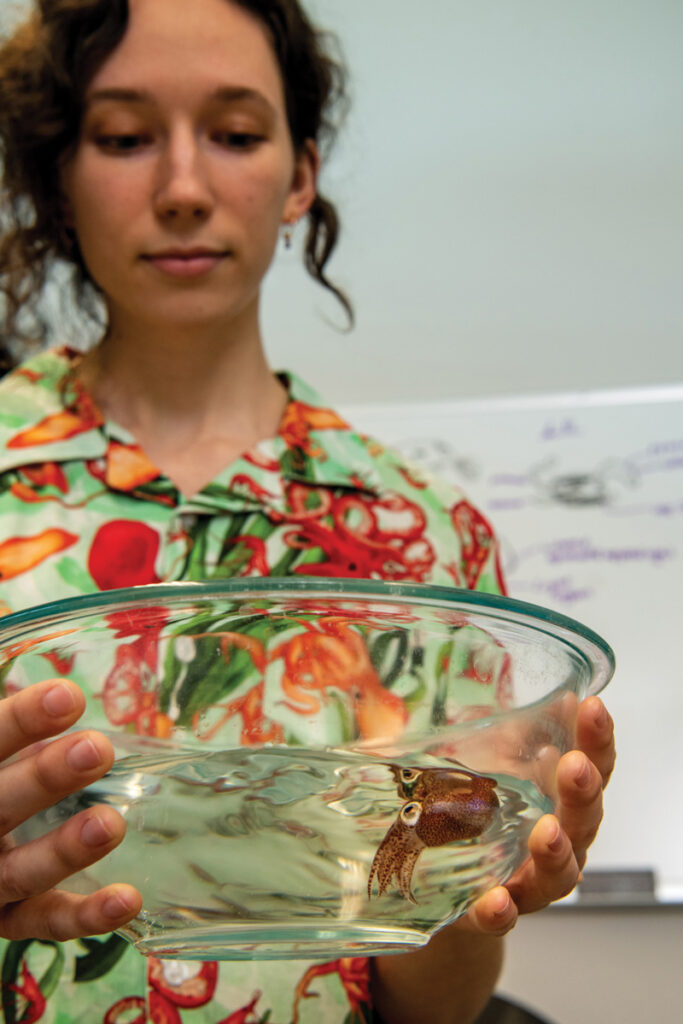Andrew Schuerger and Jamie Foster have watched hundreds of rockets launch from the Kennedy Space Center over the course of their two decades at the Space Life Sciences Laboratory, located just 8 miles from the launch pad.
“I try to go out to see absolutely every rocket launch. It’s thrilling, emotionally and psychologically,” says Schuerger, a professor of plant pathology.
Foster, a professor of microbiology and cell science, says she’ll never forget the first time one of her experiments went to space in 2011.
“It was on the space shuttle and there was nothing like going out there, feeling that sound, that vibration coming at you and knowing that you are helping the space program go a little bit forward,” she says.
UF has been the university anchor at the lab, known as the SLSL, for over 20 years, led by Schuerger, Foster and the late Wayne Nicholson. Recently, they were joined by Nils Averesch, an assistant professor of space biology.
“The SLSL is a hotspot for interactions between government, industry and university partners,” says Foster. “It’s a really unique opportunity to take advantage of the Kennedy Space Center being right next door.”
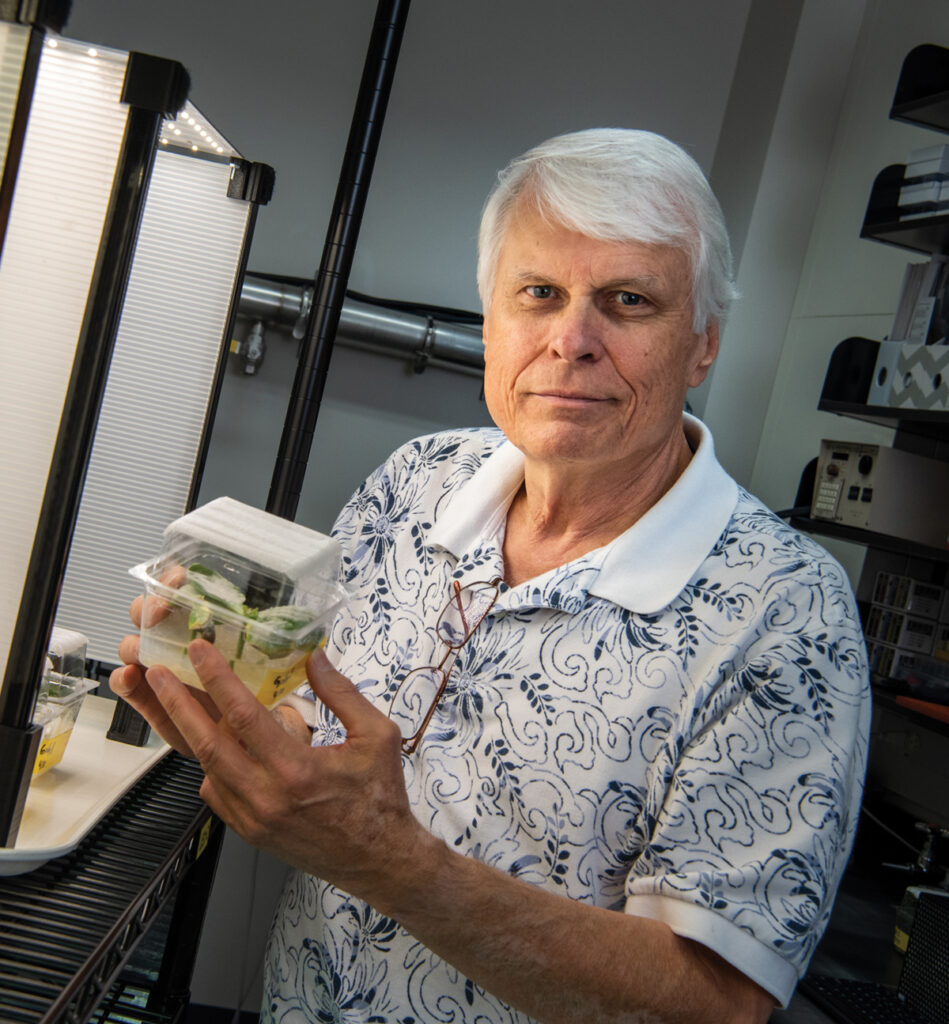
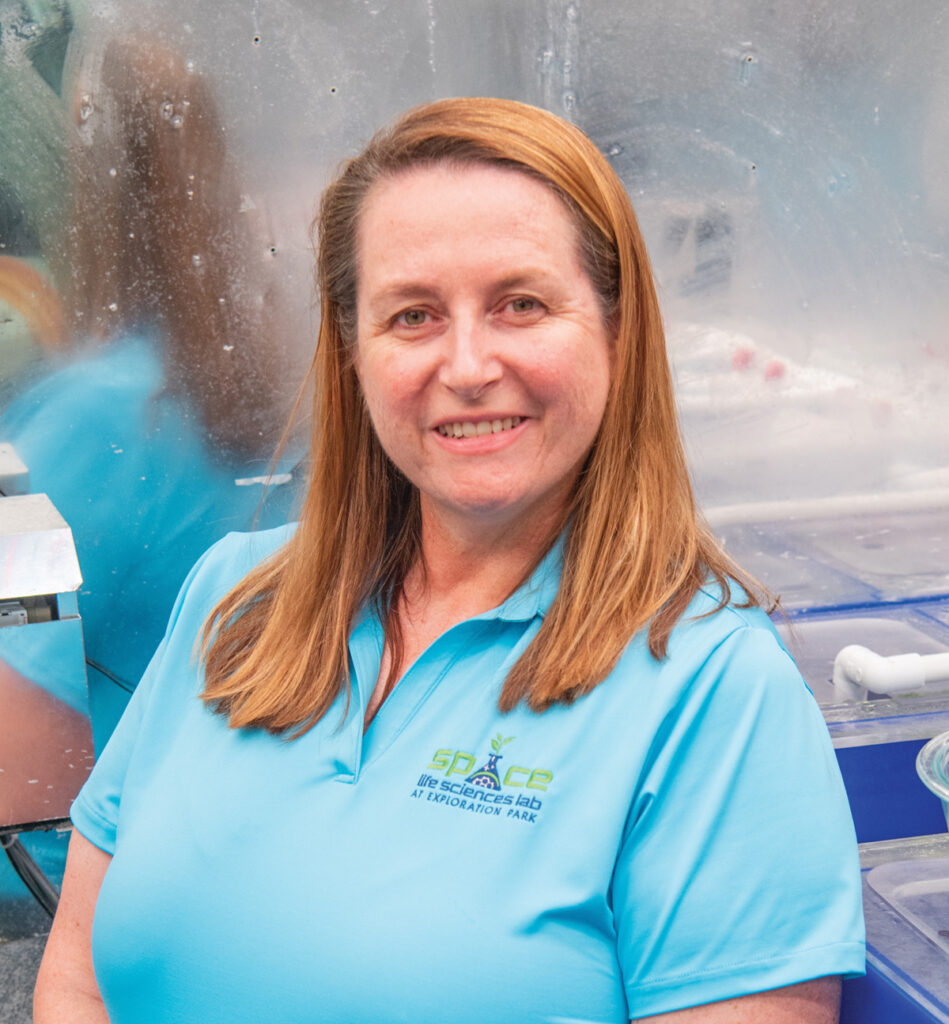
Mars in a Box
Schuerger has created a little bit of Mars in his lab. Inside a stainless steel device about the size of a washing machine called the Planetary Atmospheric Chamber, Schuerger is able to mimic the pressure, UV radiation, temperature, gas and dust conditions organisms from Earth — microbes, plants and astronauts — are likely to experience on Mars. His goal: Prevent humans from contaminating Mars and prevent anything on Mars from contaminating Earth.
NASA has a whole division devoted to these same goals. The Office of Planetary Protection is responsible for “protecting solar system bodies from contamination by Earth life and protecting Earth from possible life forms that may be returned from other solar system bodies.”
“The main objectives are to carefully control forward contamination of other worlds by terrestrial organisms and organic materials carried by spacecraft in order to guarantee the integrity of the search and study of extraterrestrial life, if it exists,” according to the NASA website. “Also, to rigorously preclude backward contamination of Earth by extraterrestrial life or bioactive molecules in returned samples from habitable worlds in order to prevent potentially harmful consequences for humans and the Earth’s biosphere.”
Schuerger says experiments exposing terrestrial microbes to Mars-like conditions in the Planetary Atmospheric Chamber indicate the planet’s harsh environment would sterilize them within hours if directly exposed to solar ultraviolet radiation, which is 1,000 times stronger than on Earth.
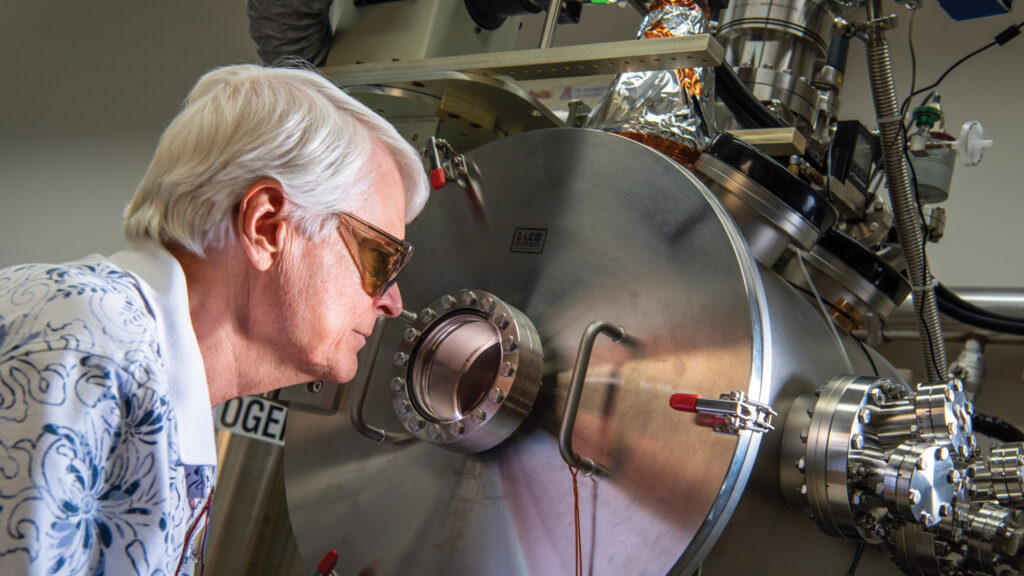
“I’m not that concerned we’re going to ruin the surface of Mars,” he says. “I think the more intriguing issue is how do we prevent bringing stuff back that might have a Martian microbiota on it, because we don’t know if one exists, and if it does, we don’t know its characteristics.”
Schuerger is also using his expertise in plant pathology to help build bioregenerative life support systems, or BLSS, that will be needed for long-duration space missions in which astronauts will not be able to carry with them all the water and food stocks they will need to survive for long missions.
“As we travel farther beyond low Earth orbit, the increased cost of resupply … will necessitate life support systems with higher efficiency and autonomy than the … systems in use today,” Schuerger and a team of scientists wrote in a recent white paper for NASA. “Just as on Earth, living organisms can provide multiple life support functions in space by recycling waste products to generate oxygen, water and food.
“But, the space environment differs from the terrestrial one, with fractional gravity or microgravity, reduced atmospheric pressure, elevated radiation, and biological isolation,” Schuerger and his colleagues argue, so it is imperative that mission planners understand potential risks to these life support systems.
Schuerger’s first career as the senior plant pathologist at The Land Pavilion at Epcot makes him uniquely qualified to address this challenge for NASA.
“We were growing over 40 food crops hydroponically at The Land, and it was set up in a way that could theoretically be extrapolated to be a ground proxy for a space-based BLSS habitat on the Moon or on Mars,” he says. “So, in essence, I spent the first 18 years of my career in a prototype of a BLSS habitat that was similar to what might be developed for human colonization of various planetary bodies in our solar system.”
Schuerger’s team is developing a flight experiment scheduled to go to the International Space Station in the next two years that will look at how plants deal with microbial diseases in space.
“Wherever plants go, diseases are sure to follow, so plant disease development has a profound impact on the future of human exploration of the solar system,” Schuerger says. “If disease resistance is ‘normal’ in space-based BLSS modules, the use of crops for food, oxygen and water recycling will be a viable option for crewed habitats on the Moon and Mars. If plant diseases develop more quickly in space than on Earth, new and unique plant production protocols may have to be developed.”
Squid Game
Foster has spent her career trying to understand how our microbiome — the bacteria, fungi and viruses that naturally live on and in our bodies — impacts health, and how space impacts the microbiome.
“The microbiome is essentially telling your body what to do at the molecular level,” Foster says. “Sometimes a bacterial signal in one part of your body, say the digestive system, can promote your health, but change the context of that signal and move it to the heart or the bloodstream, and it could potentially cause damage or disease.”
Foster uses a unique symbiotic relationship between the tiny bobtail squid and a bioluminescent bacteria called Vibrio fischeri as a model for understanding microbial interactions.
“What makes this squid so unique is that it’s born with a special light organ, and as Vibrio fischeri colonizes the squid it allows the squid to glow in the dark,” Foster says. “Since Vibrio fischeri is the only bacterium that interacts with the squid, we can control how we put the animals and the bacteria together. So, instead of trying to understand thousands of different bacterial species interacting, in this squid there’s just one host and one bacteria, and they glow, so that makes the interactions much easier to follow.”
After years of developing and testing microgravity experiments using the squid in her lab, in 2021 Foster sent a NASA-funded experiment to the International Space Station called UMAMI for Understanding of Microgravity on Animal-Microbe Interactions.
“We sent the squid to space without any microbes at all, then colonized half of the animals with the Vibrio fischeri to see how that conversation initiated and unfurled in the space environment,” Foster says. “When the animals got to space, they were all showing signs of stress. But, the animals that received their microbes had their stress levels decrease almost completely after about 12 hours. In the animals that never received their microbes, their stress levels stayed high.”
The experiment provides insights into how the space environment affects the communication between animals and microbes, Foster says. It also could have important implications for long-term space travel, where astronauts will be living in a microgravity environment for extended periods.
“Microbes could play a crucial role in helping astronauts cope with the stresses of space travel,” she says. “It also contributes to our understanding of how microbes interact with their hosts in different environments, which could have applications in various fields, including medicine and agriculture.”
Bioplastics
While most of today’s plastics use hydrocarbons like petroleum as their feedstock, Averesch is focused on ways to manufacture “bioplastics,” which use the very carbon dioxide we have too much of as a feedstock.
“Our modern society is based on making products based on petrochemistry, which we have all seen by now is not very sustainable,” he says. “Biotechnology might be how we can step away from fossil fuels. After all, the ability to convert inorganic carbon into chemicals is what life as we know it is founded on.”
Initially, Averesch wasn’t really focused on the implications of his research to space exploration, then he talked to some colleagues at NASA’s Ames Research Center in California.
“I never really considered that biotechnology could be relevant to space exploration, but NASA really liked the idea of making high-performance materials through biology,” he says.
It turns out, Mars explorers are going to need ways to repair and eventually build things from “in situ” resources.
“If we’re going to go to Mars, we can’t bring everything we need with us. We’ll need to be able to manufacture stuff on the way and when we get there, and we’ll have to use the resources we find there,” Averesch says. “Mars has carbon dioxide in the atmosphere, which is the basic feedstock every biological organism on Earth has been using for millions of years.”
Averesch says he has made progress in developing bioplastics similar to existing synthetic polyesters that could have plenty of uses on Mars.
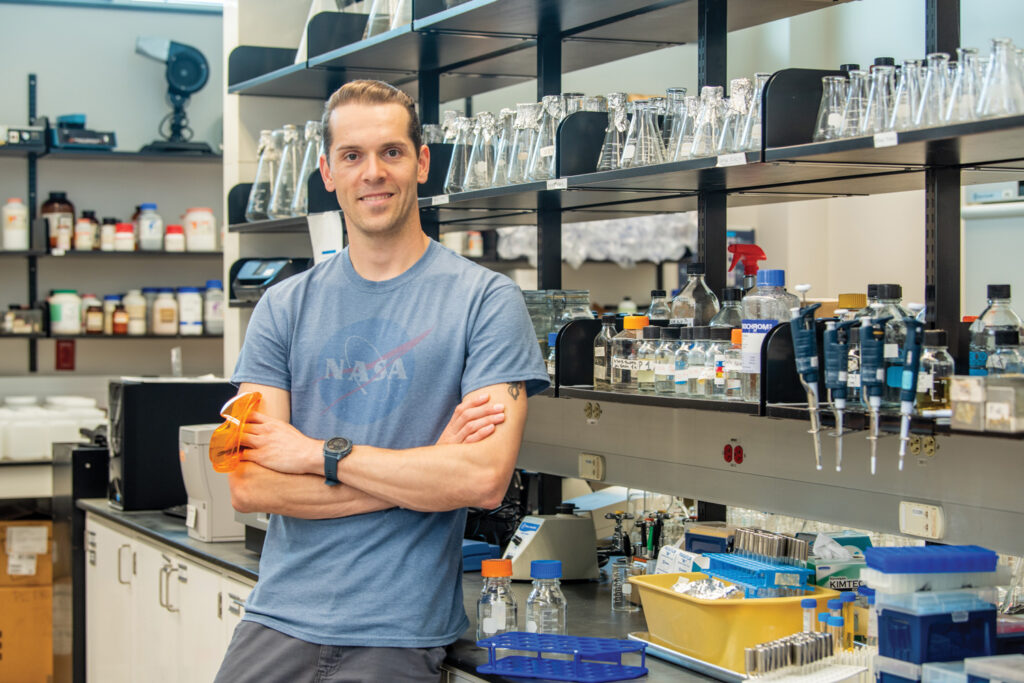
“I think the biggest near-term opportunity is in small replacement parts that could be manufactured using 3D printing, but also composites of resin with regolith could provide greater independence, as well as resilience for habitation, for example with a permanent foothold on the Moon,” he says. “Eventually, settlements off-Earth may also have the need, as well as the ability, to expand autonomously across our solar system and beyond. Being able to produce materials for manufacturing is a critical factor to enable this.”
While Schuerger, Foster and Averesch are addressing different pieces of the deep-space exploration puzzle, they all agree that working in such close proximity to the Kennedy Space Center provides major benefits.
“It is a huge advantage to have a physical, brick-and-mortar location here at the Space Life Sciences Lab. The launchpad is right over there,” Foster says. “I can just walk down the hall and talk with someone about how to get my science into space. Someone on the next floor can help me build hardware that can accommodate my plants or animals or cells. So we can get our science to space faster, and I really hope that encourages businesses, governments and other universities to want to collaborate with us, to build partnerships.”
“The University of Florida is beautifully and strategically placed to be a leader in conducting the science that’s going to move humanity out into the solar system,” Schuerger adds.
Sources:
Nils Averesch
Assistant Professor of Space Biology
n.averesch@ufl.edu
Jamie Foster
Professor of Microbiology and Cell Science
jfoster@ufl.edu
Andrew Schuerger
Professor of Plant Pathology
schuerg@ufl.edu
Hear the Story
The audio version of this story is available on our YouTube.

